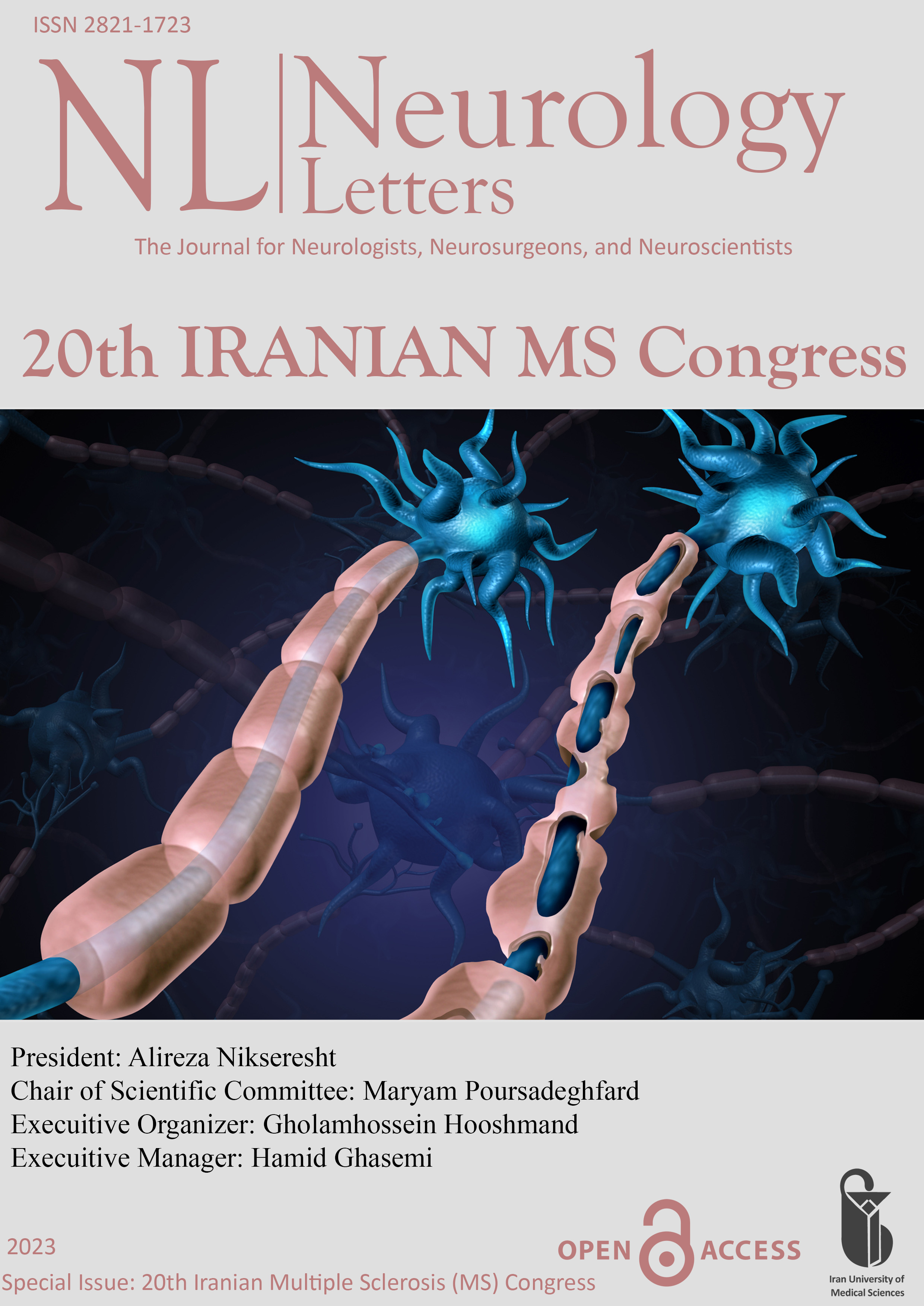Early Clinical Response and Complications of Therapeutic Plasma Exchange in Central Nervous System Demyelinating Diseases (PP-16)
Document Type : Poster Presentation
Authors
1 Student Research Committee, School of Medicine, Isfahan University of Medical Sciences, Isfahan, Iran
2 1. Department of Neurology, School of Medicine, Isfahan University of Medical Sciences, Isfahan, Iran 2. Isfahan Neurosciences Research Center, Isfahan University of Medical Sciences, Isfahan, Iran
3 Isfahan Neurosciences Research Center, Isfahan University of Medical Sciences, Isfahan, Iran
4 Department of Biostatistics & Epidemiology, School of Public Health, Isfahan University of Medical Sciences, Isfahan, Iran
5 1. Department of Neurology, School of Medicine, Isfahan University of Medical Sciences, Isfahan, Iran 2. Isfahan Neurosciences Research Center, Isfahan University of Medical Sciences, Isfahan, Iran 3. Center for Translational Neuroscience, Isfahan University of Medical Sciences, Isfahan, Iran
Abstract
Background: Appropriate treatment reduces the severity and duration of relapses in demyelinating diseases of Central Nervous System (CNS). If high-dose corticosteroids treatment fails, therapeutic plasma exchange (TPE) is considered as a rescue treatment. This study aimed to investigate early clinical response and complications of TPE and prognostic factors in CNS demyelinating relapses.
Methods: This prospective observational study was designed in a tertiary center during one year. All adult patients diagnosed corticosteroid-resistant Multiple Sclerosis (MS), NeuroMyelitis Optica Spectrum Disorder (NMOSD), idiotypic Transverse Myelitis or Clinical Isolated Syndrome relapses, were eligible. Clinical response is defined based on Expanded Disability Status Scale (EDSS) at discharge. Clinical and laboratory complications recorded.
Results: seventy-two patients were analyzed which 58.3% patients were female. MS was diagnosed for 61.1% of cases. Thirty-five patients (48.6%) responded and the mean differences of EDSS significantly decreased 0.60 score (CI95%:0.44-0.77). Electrolyte imbalances and thrombocytopenia occurred in 80.6% and 55.6% of cases respectively and 40.3% of patients had systemic reactions. However, 26.4% patients experienced moderate to severe complications. In patients with moderate to severe disability, responders were younger (MD:8.42years, CI95%:1.67-15.17) and had lower EDSS score at admission (median:6, IQR:5.5-6 against 7.5 IQR:6.5-8). Relapsing-Remitting MS (RRMS) patients had more odds of response compared to active progressive MS patients (OR:6.06, CI95%:1.37-26.76). Patients with thrombocytopenia were hospitalized more than others (MD:1.5 days, CI95%:0-3). Females were more prone to hypokalemia and systemic reactions (OR:3.11, CI95%:1.17-8.24 and OR:6.67, CI95%:2.14-20.81 respectively).
Conclusion: The most common indication of TPE was corticosteroid-resistant severe MS relapses. About half of the patients presented an early clinical response. Lower disability, younger age and RRMS diagnosis are prognostic factors of better response. One out of four patients experienced moderate to severe complications, mainly electrolyte imbalances and systemic reactions. Appropriate interventions against these complications should be considered during TPE, especially in females.
Keywords
 Neurology Letters
Neurology Letters
